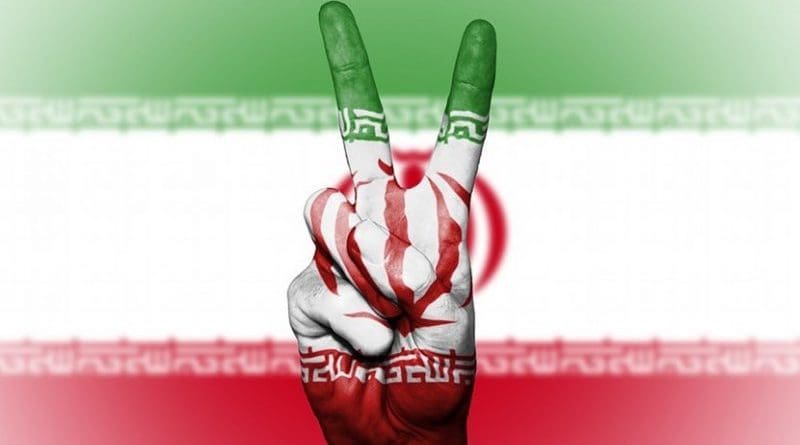40 Years Of Clerical Regime In Iran – OpEd
By Reza Shafiee
Many still remember the days preceding the February 1979 anti-monarchist revolution in Iran. It not only galvanized a young and energetic population in Iran but many others around world who lunged for freedom.
Those days were filled with hopes and desires for a new life, a future with democracy and freedom.
Soon the revolution’s honeymoon was over. The “Revolution’s spring” was short-lived and lasted only two years.
The dark clouds spread across the nation and the rosy pictures dashed away. Prisons deserted with the old regime gone were filled again with young men and women who ironically played a crucial role in the revolution.
The Velayat-e faqih (Guardianship of the Islamic Jurist) was established based on idea of suppression at home and expansionism abroad.
Ruhollah Khomeini, theocratic regime’s founder, was quoted as saying that if the Islamic Republic was confined within its borders, it will die. This is the doctrine the heirs have followed in dealing with Iran’s neighbors as the first stop in building their fundamentalist Shiite Empire.
Participating in regional wars either directly or through its proxies shows a relentless attempt in the same direction. Wars in Syria, Iraq and Yemen are just a few that Iran’s Revolutionary Guards and its external arm the Quds Force as key players. Wars are costly and Iranian regime has been spending generously from the countries vast resources. Once among the wealthiest people in the region, now many ordinary Iranian citizens search garbage cans for food.
1979-1981: a failed attempt at reforming the new regime
During this time, Iranian main opposition the People’s Mojahedin Organization of Iran (PMOI/MEK) with the help of its allies, did its best to reform Khomeini. It was a torturous process, which at the end cost the MEK 50 lives. The devoted supporters of the organization who happened to be very young were not to engage in street fights with the government forces. There were scores of plain-cloths forces armed with clubs, knives and guns attacking the MEK sympathizers. They were advertising the organization’s publications on street corners.
On June 20, 1981, 500,000 Iranians fed-up with the regime’s behavior took to the streets in a peaceful demonstration. But it did not last long before the Revolutionary Guards received their marching orders from Khomeini to open fire. They killed scores of unarmed protesters. The day after, prisons were filled with young protesters arrested the day before.
1981-1988: reign of terror
The following years, according to many historians, were amongst the darkest days of the ruling regime. Thousands of political prisoners were executed. The 8-year-old Iran-Iraq war was in full swing and provided cover for atrocities at home. In the summer of 1988 alone, more than 30000 political prisoners were executed, the majority MEK members and supporters. Among the terrorist attacks of that era, what stands out is the deadly attack on US and French barracks in Lebanon in 1983. Former Minister of the IRGC Mohsen Rafighdoost was quoted by the state-run daily, Resalat, saying that “The United States knows the explosives that mixed with ideology and sent up to 400 officers and Marines in the United States Marine Barracks to hell; both the TNT and the ideology behind it came from Iran.”
Another high profile terrorist attack, which was carried out by the IRGC in 1986 targeted the most holy place in Islam, Mecca. The pilgrims, about 100 elderly men and women from Iran, were unaware that their bags contained bombs. The explosives were detected, removed and made safe by Saudi authorities during the regular screening process, then returned to the visitors to continue their pilgrimage unhindered.
1990s; intensified terror at home and abroad
1990s coincided with president Akbar Hashemi Rafsanjani’s tenure, a newly found “moderate.” His term is market by the most brutal terror attacks on Iranian dissidents abroad. Many were gone down in bright day light in European countries: France, Austria, Switzerland and Italy. Of course as always during the four decades of its rule, the regime main focus has been its main opposition: MEK and its partner the National Council of Resistance of Iran (NCRI). Iraq was a fixed target since it was home to the opposition.
Back in Iran, although the clerical regime kept a tight led on the news but there were major uprisings in cities such as Mashhad in northeast, Arak in central Iran and Islamshahr in suburbs of capital.
1990s and 2000s: A competition in the West to win over Iranian clerics
Those years coincided with the Western countries’ race for appeasing the Iranian regime. The EU came up with grandiose names such as “ critical dialogue” for opening talks with Iran’s so-called “reformists.” However according to President Hassan Rouhani’s memoirs of nuclear negotiations Iran was playing them all.
In a speech to a closed meeting of leading Islamic clerics and academics, Rouhani, who headed talks with the so-called EU3 in 2003, revealed how Teheran played for time and tried to dupe the West after its secret nuclear program was uncovered by the Iranian opposition in 2002.
A departure from the failed policy
In all fairness the winner in the race to appease Iran was of course by far the former US administration with its failed nuclear deal in 2015.
The US leaving behind the futile appeasement policy, past two years have turned into nightmare for the regime. On top of that the country is boiling in dissent. Feeling the heat, the Iranian regime removed the “moderation” mask and showed its true color.
2018 was the year that the regime planed terrorist plots on European soil.
The Iranian regime once again has targeted its main opposition, which in the words of Supreme Leader Ali Khamenei is the number one enemy.
After 40 years of suppression at home and export of terrorism abroad, people no longer are willing to put up with the status quo. Protesters organized by a seasoned opposition will change the regime.

